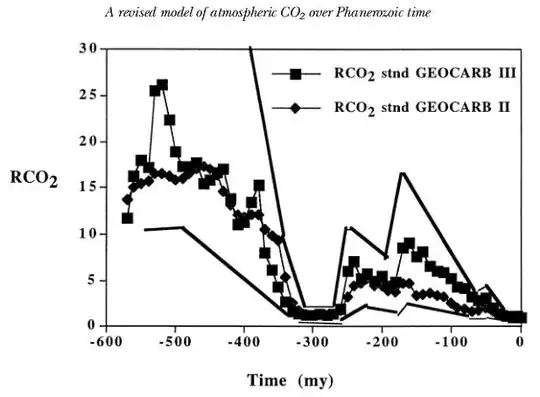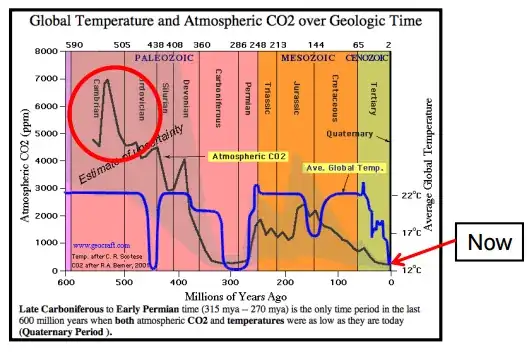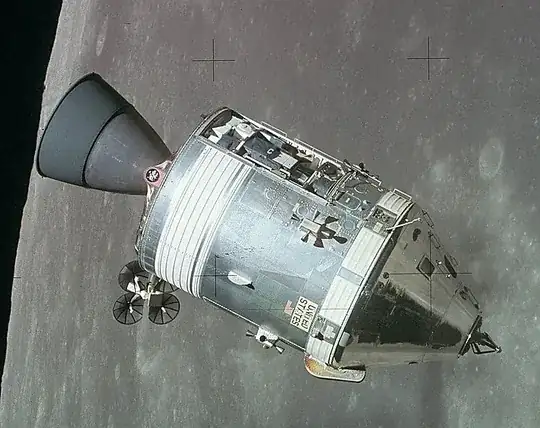According to GEOCARB III: A Revised Model of Atmospheric CO2 over Phanerozoic Time and the corresponding paper
Calculated paleolevels of atmospheric CO2 from the GEOCARB III model, which
models the carbon cycle on long time scales (here a 30 million year resolution).
The long term carbon cycle is primarily geochemical, a result of the exchange of
carbon between the atmosphere and rocks. The third revision includes improvements
in the modeling of factors affecting CO2 uptake by continental weathering.
Time(Ma) ....... RCO2
-570 ........... 11.70362
-560 ........... 16.26684
-550 ........... 17.95147
-540 ........... 17.19382
-530 ........... 25.52706
-520 ........... 26.18222
-510 ........... 22.39725
-500 ........... 18.89189
-490 ........... 17.29675
-480 ........... 17.28357
-470 ........... 17.72622
-460 ........... 15.46943
-450 ........... 15.85446
-440 ........... 16.68599
-430 ........... 16.99756
-420 ........... 13.90174
-410 ........... 11.0387
-400 ........... 11.32285
-390 ........... 13.45455
-380 ........... 15.30221
-370 ........... 8.040017
-360 ........... 6.137963
-350 ........... 4.337569
-340 ........... 2.704967
-330 ........... 1.671433
-320 ........... 1.338068
-310 ........... 1.254083
-300 ........... 1.249976
-290 ........... 1.326288
-280 ........... 1.255351
-270 ........... 1.440589
-260 ........... 1.872322
-250 ........... 6.081883
-240 ........... 7.104142
-230 ........... 5.197366
-220 ........... 5.831312
-210 ........... 4.912341
-200 ........... 5.442125
-190 ........... 4.441496
-180 ........... 4.843969
-170 ........... 8.573481
-160 ........... 9.123775
-150 ........... 7.599305
-140 ........... 8.198544
-130 ........... 6.605868
-120 ........... 6.096954
-110 ........... 5.88872
-100 ........... 5.30103
-90 ............ 4.317839
-80 ............ 4.185097
-70 ............ 3.200051
-60 ............ 2.802144
-50 ............ 3.176976
-40 ............ 2.066398
-30 ............ 1.417627
-20 ............ 1.156633
-10 ............ 0.990113
0 ............... 0.9879701
[RCO2=the ratio of mass of CO2 at time t to that at present (t=0)]
(only the first one or two digits of each RCO2 value are significant, I don't know why they went wild on the number of digits. For actual uncertainty see the upper and lower lines relative to the square data points in the figure below which is Fig. 13 from the paper)

So, at 30 million year resolution, there was never a time where CO2 concentration was as low as it is now.
This data seems to contradict the scientific consensus on man-made climate change.
This is false. Never until now have fossil fuels been selectively extracted and burned, producing carbon dioxide.

It is simply the truth that atmospheric CO2 concentration has increased dramatically and at an increasing rate since we have started measuring it directly.



